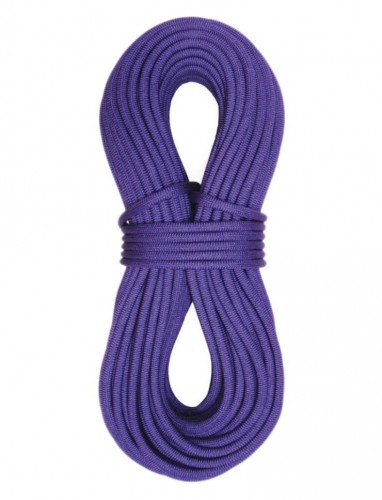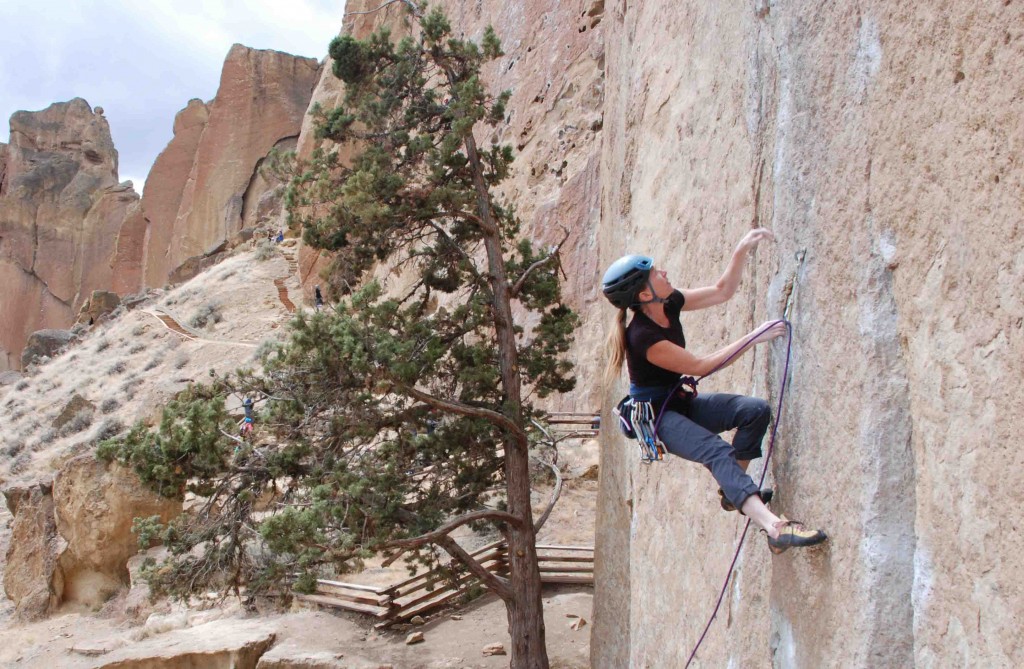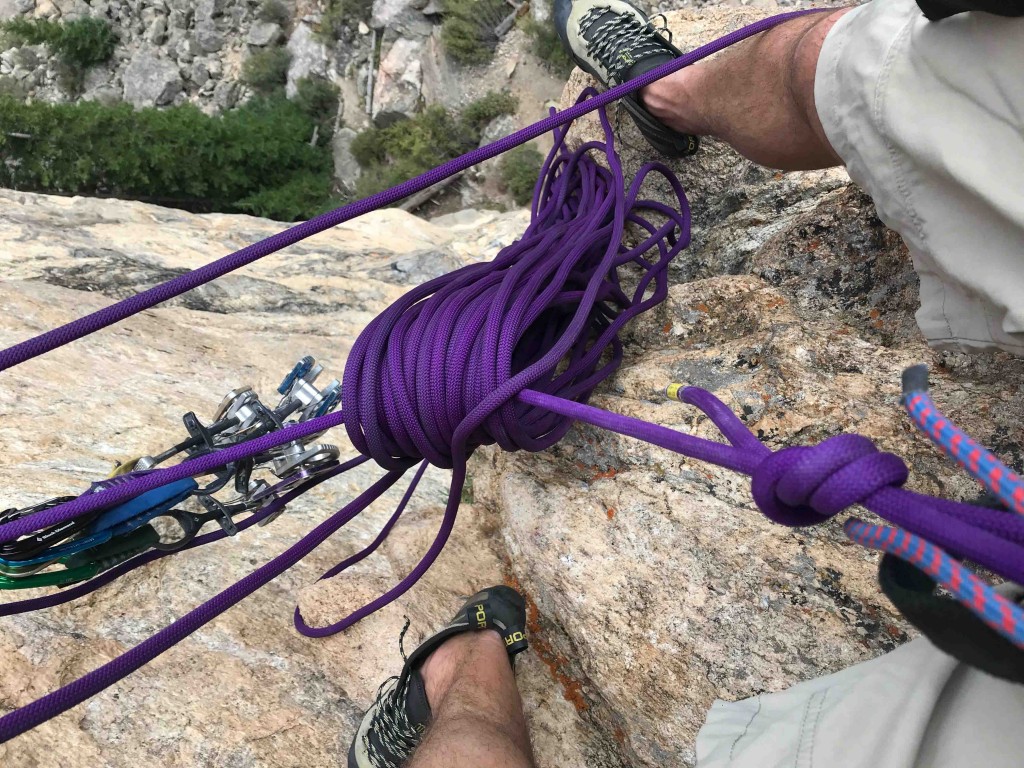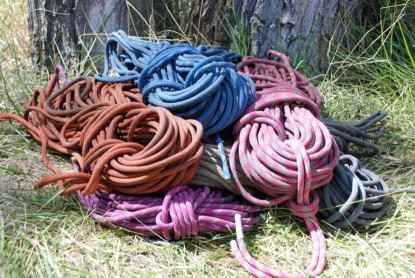This rope used to be known as the “Fusion Nano IX,” but Sterling has dropped the “Fusion” from the name. If you see this as part of the name, then perhaps you can get this rope at closeout prices. However, the Nano IX is essentially the same as the older version with the old name.
Sterling Nano IX Review
Our Verdict
This rope used to be known as the “Fusion Nano IX,” but Sterling has dropped the “Fusion” from the name. If you see this as part of the name, then perhaps you can get this rope at closeout prices. However, the Nano IX is essentially the same as the older version with the old name.
Our Analysis and Test Results
We need to take a moment before we start this review to mention that thin lines like the Nano IX, the Edelrid Swift Eco Dry, and the Beal Joker are for experienced climbers only. These specialty lines serve a great purpose for those looking to move fast in the mountains or send a hard and long sport route, but they are more difficult to use than the “thicker” ropes in this review. Even our experienced testers found it a little more worrisome to catch a big fall with these lines. Not all active assist belay devices will grip one of these super-thin ropes, so check yours before you belay with one. They will also not last as long as a thicker rope and are more expensive, so they are not intended for everyday use. Sterling even has the following warning on their website: “Due to the Nano's small diameter, it is recommended that it only be used by experienced climbers and belayers and NOT for top-roping or working of routes. It is critical that proper belay devices be used and extreme caution should be taken.”
The Sterling Nano IX is a 9.0mm rope that weighs 52 g/m, making it one of the thinnest and lightest lines in this review. It is rated for single, twin, and half use, and it's available at standard intervals up to 80m.
Performance Comparison
Handling
The Nano has great handling out of the box, without feeling too slippery or slick. Sometimes the dry treatment that a manufacturer uses can end up leaving what feels like a slick residue on the surface of the rope, but we didn't notice it with Sterling's DryXP treatment (a UIAA-certified treatment that prevents less than 5% water absorption). The Nano IX continued to have great handling throughout our testing period, though right towards the end (around the 80 pitch mark), we noticed that it was starting to stiffen a little. A quick trip through the washing machine solved that problem, and it continued to handle better than the similarly thin and lightweight Beal Joker.
That being said, it is still a skinny line, and it's generally harder to control in a belay device compared to a thicker 9.7-9.8mm rope, which is why its overall handling score is lower than some other models in this review. Gloves help with this a lot, as does experience. Be sure to look at your belay device carefully and consult the specs. Petzl's newest GriGri and GriGri+ can accommodate ropes down to 8.5 mm and should help give you more peace of mind when branching into the skinny rope world.
On a final note, the middle mark on the purple line that we tested was almost impossible to see, and it wore off quickly. If you need a distinct middle mark for frequent rappels, consider a lighter color or even better the bi-pattern option.
Catch
We didn't notice anything particularly hard about the catch on this rope, other than we always hoped our belayer was holding on tight! The Nano IX doesn't have quite as much elongation as most of the thicker lines that we tested (26% vs. the 38% of the Beal Booster), but that wasn't always noticeable in a real-world fall scenario with a dynamic belay.
Weight
Here is where the Nano IX beat all of the other models. At only 52 g/m, it is easily one of the lightest lines in this review, tying the Edelrid Swift Eco Dry for that honor. But what does that mean for you? A 70-meter length of the Nano Ix should weigh around 8 pounds, which is almost 2 pounds less than a 62 g/m workhorse rope. That difference is certainly noticeable in your backpack, as well as at the top of a long pitch. However, that weight savings comes at the cost of the next metric: durability.
Durability
When compared to the other lines in this review, there's no question that the skinny ones are less durable in the long term. While a thicker “workhorse” rope could last you for years if you put the same cragging and top rope use on one of these it probably won't. That's because most ropes get retired due to sheath damage and there's less sheath material as a percentage of the overall rope (only 29% for the Nano compared to high 30's and low 40's for thicker lines). We did treat this line like a cragging rope and have to say that we were impressed with how much better it looked than the Joker after about 80 pitches. The Nano's sheath did have some “glazed” sections though. We prefer the Nano for sport cragging if you insist on going skinny. That said, our favorite choice for sport climbing on a skinny rope is the Edelrid Swift Eco Dry, so be sure to take a look at that one as well if you are purchasing a long send line.
Note that we heard a lot of anecdotal reports (and read some online as well) about these thin lines getting a core shot on the first pitch of XYZ after getting stuck behind a flake etc., etc. Is this necessarily the rope's fault? A 10mm line might have had the same issue in the same situation. While our durability testing is not exactly lab conditions, we do strive to put the same amount of wear on all the ropes we test on the same types of rock.
Value
There's no doubt that this is an expensive rope, and considering you won't want to use it for all of the various situations that you could use a thicker rope, its overall value is suspect. Beyond that, thinner lines like this one surely won't last as long as a thick workhorse, which may also be cheaper. What we're saying is that this is not the rope for you if you are on a budget, and should be a specialty rope for experienced climbers who know they need it. Compared to the other skinny ropes we've reviewed, it's not the most expensive nor the least, and we think it affords pretty decent value for its specific purpose.
Conclusion
We like a lot of things about the Sterling Nano IX. It's lightweight, handles well, and it fared pretty well during our tests. This is a great rope for certain situations, like a hard onsighting on a long alpine route, but it's not the best everyday cragging rope. The new DryXP treatment also makes it suitable for mountaineering and ice climbing, though the rise of the Unicore lines has us often opting for those in many situations due to the extra bit of safety that their interconnected sheath and core provide. The Nano is still a great line though, and we'll be bringing it out for those backcountry routes that goes on forever.











